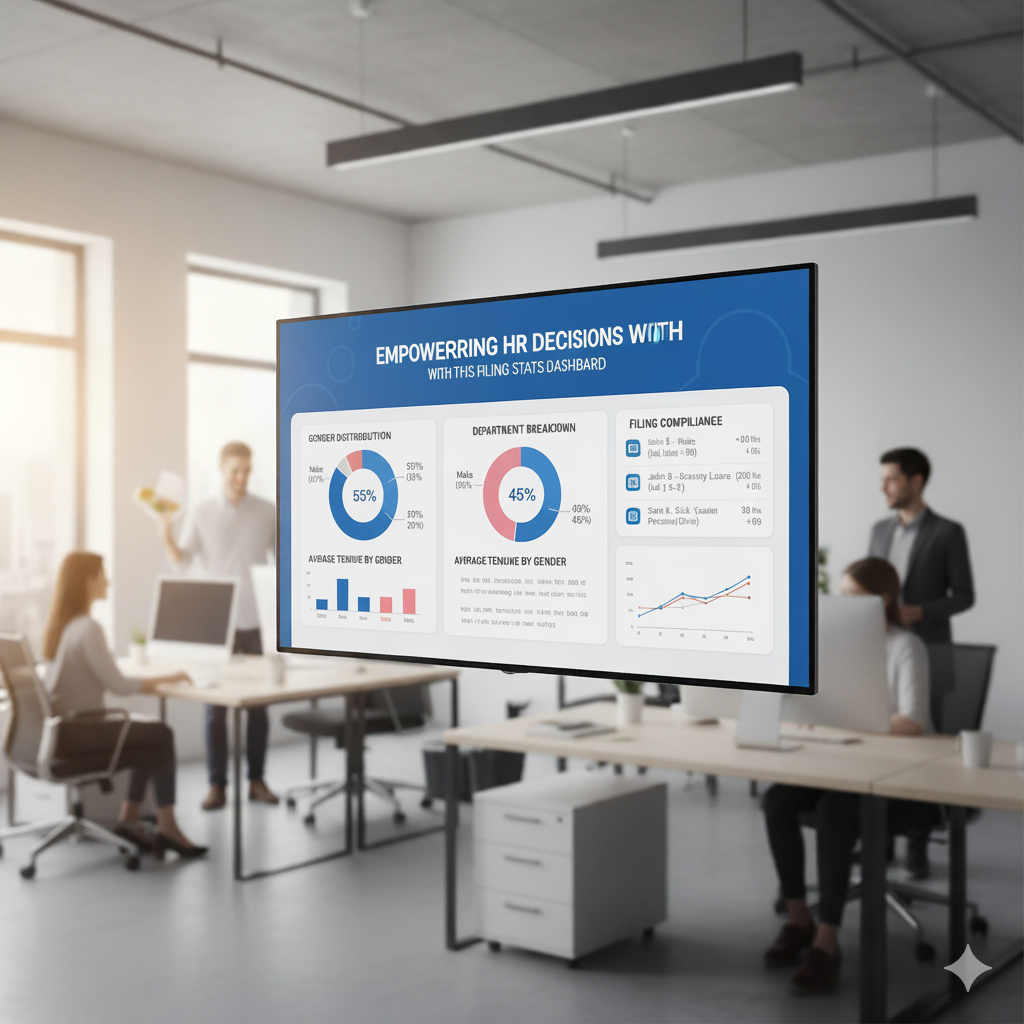In today’s modern workplace, diversity, equity, and inclusion (DEI) are more than buzzwords — they’re essential components of organizational success. To foster fair and data-driven HR practices, companies need tools that can visualize gender representation across departments and roles.
That’s where Gender Analytics in HRIS Dashboards come in. By leveraging analytic graphs and real-time data, HR teams can track gender balance, identify disparities, and make informed decisions that support equality and growth.
Let’s explore how HRIS dashboards are transforming the way organizations approach gender diversity and workforce analytics.
What Are Gender Analytics in HRIS Dashboards?
Gender Analytics in HRIS (Human Resource Information System) refers to the use of built-in data visualization tools — such as charts, graphs, and filters — to track, analyze, and report workforce gender distribution and trends.
The HRIS Dashboard aggregates data from employee records to present insights like:
- Gender ratio by department or job level
- Recruitment and promotion trends
- Pay equity comparisons
- Retention rates by gender
With these visual insights, HR leaders can monitor diversity metrics in real time and ensure that company policies align with inclusivity goals.
Key Features of Gender Analytics in HRIS Dashboards
- Visual Representation of Gender Data
Bar charts, pie graphs, and trend lines give a clear snapshot of gender distribution across your organization, helping you visualize balance or gaps instantly. - Department-Wise Gender Metrics
Quickly identify gender ratios within specific departments or divisions to evaluate diversity at every level. - Recruitment and Turnover Analysis
Track whether hiring and retention patterns are equitable across genders — essential for fair recruitment and promotion strategies. - Pay Equity Insights
Compare compensation structures to identify and correct potential gender pay gaps. - Customizable Reports
Generate detailed reports for HR audits, compliance requirements, or executive presentations — all in just a few clicks.
Benefits of Using Gender Analytics in HRIS
| Benefit | Description |
| ✅ Data-Driven Decisions | Empower HR to create fair policies using accurate, real-time gender data. |
| ✅ Improved Diversity Goals | Measure progress toward gender equality initiatives. |
| ✅ Enhanced Transparency | Build trust with employees by sharing gender metrics and progress. |
| ✅ Regulatory Compliance | Meet reporting requirements for labor laws and diversity standards. |
| ✅ Strategic Workforce Planning | Forecast hiring needs and succession planning with a gender-balanced perspective. |
How HRIS Dashboards Empower HR Leaders
- Identify Inequalities Quickly:
Visual graphs make it easier to spot areas where gender imbalance exists — whether in management, technical roles, or pay scales. - Enhance Recruitment Strategies:
Gender data helps HR teams design fair hiring campaigns that attract diverse candidates. - Support Policy Development:
HR can create or adjust policies based on factual evidence, such as improving parental leave, flexible work hours, or training programs that support women in leadership. - Track DEI Progress Over Time:
Regular analysis ensures continuous improvement and accountability in gender equity initiatives.
Real-World Application Example
Imagine a company analyzing its HRIS gender analytics dashboard and noticing that women represent only 30% of management positions. With this insight, HR can:
- Launch targeted leadership programs for women
- Ensure fair promotion opportunities
- Adjust recruitment strategies to attract more female candidates
Within months, the organization can measure progress and report tangible improvements — all tracked through the same dashboard.
Conclusion
The Gender Analytics in HRIS Dashboards serve as more than just charts and numbers — they’re strategic tools that drive workplace equality, transparency, and growth.
By harnessing gender data effectively, HR leaders can make informed, equitable decisions that strengthen company culture and align with DEI goals.
If your organization values fairness and data-driven HR strategy, it’s time to embrace gender analytics within your HRIS — and lead the way toward a more inclusive future.

